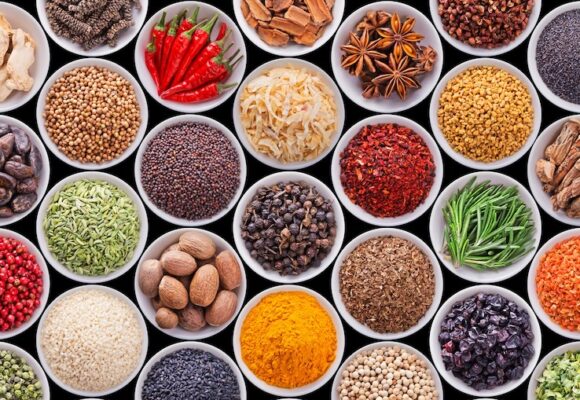
近年来,随着人们对自身健康之益的认知不断加深,坚果食用的受欢迎程度猛增,并且消费者欣然接受了坚果赋之零食、家常烹饪和加工食品所带来的口味和质感。
坚果中富含营养成分,有研究表明,经常食用坚果会带来诸多健康益处,包括显著降低冠心病和心血管疾病风险 1-3 ,以及降低中风和2型糖尿病的风险。 1,2, 4-6
著名的PREDIMED研究7 就地中海饮食方式中是否摄入坚果分别带来的影响做出了调研,结果发现饮食中每日摄入坚果可将因心血管原因引起的心肌梗塞、中风或死亡的综合风险降低28%。
摄入坚果还可以改善内皮功能8,9 ,改善慢性炎症8-10 ,新兴的研究则表明,食用坚果可能会对肠道微生物组产生积极影响。 11-13
然而,大多数人仍然没有摄入足够的坚果,最近的一篇叙事综论文献中对坚果摄入的壁垒和促进因素进行了研究14,文中强调,尽管全世界饮食指南中都在推广坚果摄入,但坚果的摄入量仍远远低于建议水平。
那么,究竟是什么原因导致了消费者仍未摄入足够量坚果的行为,他们所忽略的建议是什么,我们又该如何弥补这种差距?
在本文中,我们研究了三大对于日常摄入坚果的壁垒,消除了其中一些误解,并着重指出了这些现状有助于缩小当前和建议食用水平之间的差距。
壁垒#1: 对于脂肪含量和体重管理的概念混淆
坚果由于脂肪含量高,因此是一种能量密集的食品。坚果中的主要脂肪是有利于健康的有利不饱和脂肪(单不饱和脂肪和多不饱和脂肪)。 澳洲坚果是单不饱和脂肪的第一大坚果来源。 但是,尽管低脂饮食的信息已经在过去几十年间全面洗牌,“好”和“坏”脂肪的概念也得以推广,但概念混淆仍然存在,并且这种混淆似乎还在影响全球范围内的消费者行为。
- 一项针对澳大利亚消费者对坚果看法的调查显示,有15-25%的消费者认为食用坚果确实会导致体重增加,有62%的消费者认同:如果食用坚果会使他们摄入过多脂肪,那么他们会避免食用坚果和坚果酱,但是 70%的消费者说,如果摄入坚果和坚果酱能帮助他们获得健康脂肪的平衡,那么他们会增加其摄入量15
- 新西兰的一项横向调查显示,人们避免食用坚果酱的主要原因之一是他们认为坚果酱不健康且脂肪含量高16
- 在美国,87%的心血管疾病和/或2型糖尿病的患者或有这些疾病风险的人认为,食用坚果会导致体重增加17
那么科学上怎么说呢? 根据叙事综论文献里所说,没有证据表明吃坚果会导致体重增加。 18, 19, 20 实际上,情况恰恰相反,一些证据表明,习惯性食用坚果对体重超标的人有好处,21 尤其是如果在饮食中食用坚果来代替其他食物的话。

在坚果如何帮助维持健康体重方面,存在有多种作用机制:
- 坚果中的可代谢能量据认为比常规能量估计值低5%至30%22-25
- 坚果中的纤维和蛋白质含量使其成为非常具有饱腹感的食物26
- 越来越多的证据表明,食用坚果可以帮助改善整体饮食质量8, 27
机遇: 对于许多消费者来说,高能量食品对体重友好的想法仍然是违反直觉的。叙事综论文献中明确了一点,使消费者了解坚果的脂肪特性,以及坚果摄入对体重的作用,以帮助消费者将坚果和含有坚果的产品作为日常饮食的一部分。
壁垒#2: 牙齿问题会使食用坚果时产生不适
牙齿问题可能会令食用带壳坚果感到不便或不适,针对澳大利亚卫生专业人员展开的一项调查表明,这是一个普遍关注的问题,他们的客户表示牙齿问题使食用坚果成为问题,这种情况占到了超过一半的比例。17 其他国家的调查中也有类似的结果。
机遇: 享用坚果的形式多种多样。 不论是切碎,制成馅儿还是和面粉混合,坚果都在其中提供了必需的营养,因此,鼓励这一类消费者采用不那么有挑战性的形式来食用坚果就成为了一种契机。

壁垒#3:坚果过敏问题
对于诊断出坚果过敏的消费者来说,避免食用坚果和坚果产品是必须的,也是唯一的解决方法,这其中也存在着一个认知和医疗建议不断发展的空间。
针对澳大利亚和新西兰的卫生专业人员的调查显示,据客户报告的坚果过敏是摄入坚果的常见壁垒。 但是,这些报告的百分比(最高可达15%)超过了医学文献中记载的花生和树果过敏的患病率,据估计这个比例范围在小于1%到最多4%之间。 这可能就表明有些人错误地自我报告了坚果过敏症。
作为可能是世界上食物过敏率最高的国家,澳大利亚的研究人员正在引领全球食物过敏管理方法的转变,以期遏制受影响儿童的人数。 大洋洲临床免疫学及过敏症协会(The Australasian Society of Clinical Immunology and Allergy)现在建议27:
- 根据家庭通常吃的食物来介绍食物,而不管食物是否被认为是常见的食物过敏源,年龄在4-6个月左右。 这可以包括坚果酱、馅料和面粉。
- 在怀孕期间或母乳喂养期间不排除食用任何特定食物(包括被认为具有高度致敏性的食物),因为尚未证明这可以防止过敏。
- 避免在学校全面禁止特定食物。
机遇: 持续的消费者教育和确保近期过敏研究和建议很重要,尤其是在千禧一代中成长的这些受众中,在这个时代,人们大都避免食用坚果,因此他们经常不确定将坚果加入自己饮食中是否安全。 叙事综论文献中还强调了进行进一步研究的机会,以探索那些没有医学诊断过敏的人是否不必要地避免食用某些食物。
为什么是时候打破壁垒了?
就每日坚果消费而言,全球潜力巨大,并且可以说,消费者对于健康信息的关注从未至如此。
全球有60%的消费者表示,由于COVID-19,他们对自己的整体健康和福祉更加了解28。根据Mintel的说法,该流行病已将健康置于人们日常生活的重中之重,并在其2021年全球消费者趋势报告中指出 ,“随着消费者逐渐战胜流行病而前进,人们将对自身拥有健康的身体而产生一种新的感激之情。”
了解当前阻碍消费者摄入坚果的这些壁垒,可以帮助指导坚果行业策略指定和信息传递,以及品牌欣然将坚果以其丰沛营养、口味和质感为特色融入产品中。 具备了这些知识以及了解到消费者当前对健康的诉求,我们现在这一阶段将比以往任何时候都可以帮助更多的消费者发现每日食用坚果的健康益处。
参考文献:
-
Zhou, D.; Yu, H.; He, F.; Reilly, K.H.; Zhang, J.; Li, S.; Zhang, T.; Wang, B.; Ding, Y.; Xi, B. Nut consumption in relation to cardiovascular disease risk and type 2 diabetes: A systematic review and meta-analysis of prospective studies. Am. J. Clin. Nutr. 2014, 100, 270–277.
-
Luo, C.; Zhang, Y.; Ding, Y.; Shan, Z.; Chen, S.; Yu, M.; Hu, F.B.; Liu, L. Nut consumption and risk of type 2 diabetes, cardiovascular disease, and all-cause mortality: A systematic review and meta-analysis. Am. J. Clin. Nutr. 2014, 100, 256–269.
-
Mayhew, A.J.; de Souza, R.J.; Meyre, D.; Anand, S.S.; Mente, A. A systematic review and meta-analysis of nut consumption and incident risk of CVD and all-cause mortality. Br. J. Nutr. 2016, 115, 212–225.
-
Aune, D.; Keum, N.; Giovannucci, E.; Fadnes, L.T.; Boffetta, P.; Greenwood, D.C.; Tonstad, S.; Vatten, L.J.; Riboli, E.; Norat, T. Nut consumption and risk of cardiovascular disease, total cancer, all-cause and cause-specific mortality: A systematic review and dose-response meta-analysis of prospective studies. BMC Med. 2016, 14, 207.
-
Grosso, G.; Yang, J.; Marventano, S.; Micek, A.; Galvano, F.; Kales, S.N. Nut consumption on all-cause, cardiovascular, and cancer mortality risk: A systematic review and meta-analysis of epidemiologic studies. Am. J. Clin. Nutr. 2015, 101, 783–793.
-
Wu, L.; Wang, Z.; Zhu, J.; Murad, A.L.; Prokop, L.J.; Murad, M.H. Nut consumption and risk of cancer and type 2 diabetes: A systematic review and meta-analysis. Nutr. Rev. 2015, 73, 409–425
-
Estruch, R.; Ros, E.; Salas-Salvadó, J.; Covas, M.-I.; Corella, D.; Arós, F.; Gómez-Gracia, E.; Ruiz-Gutiérrez, V.; Fiol, M.; Lapetra, J.; et al. Primary Prevention of Cardiovascular Disease with a Mediterranean Diet Supplemented with Extra-Virgin Olive Oil or Nuts. N. Engl. J. Med. 2018, 378, e34
-
Neale, E.P., et al., The effect of nut consumption on markers of inflammation and endothelial function: a systematic review and meta-analysis of randomised controlled trials. BMJ Open, 2017. 7(11): p. e016863.
-
Thijssen, D.H.J.; Green, D.J. A Future for Flow-Mediated Dilation—Just Follow the Guidelines. JAMA Cardiol. 2020, 5, 360–361.
-
Xiao, Y.; Xia, J.; Ke, Y.; Cheng, J.; Yuan, J.; Wu, S.; Lv, Z.; Huang, S.; Kim, J.H.; Wong, S.Y.-s.; et al. Effects of nut consumption on selected inflammatory markers: A systematic review and meta-analysis of randomized controlled trials. Nutrition 2018, 54, 129–143.
-
Bamberger, C.; Rossmeier, A.; Lechner, K.; Wu, L.; Waldmann, E.; Fischer, S.; Stark, R.G.; Altenhofer, J.; Henze, K.; Parhofer, K.G. A walnut-enriched diet affects gut microbiome in healthy caucasian subjects: A randomized, controlled trial. Nutrients 2018, 10, 244.
-
García-Mantrana, I.; Calatayud, M.; Romo-Vaquero, M.; Espín, J.C.; Selma, M.V.; Collado, M.C. Urolithin Metabotypes Can Determine the Modulation of Gut Microbiota in Healthy Individuals by Tracking Walnuts Consumption over Three Days. Nutrients 2019, 11, 2483
-
Holscher, H.D.; Guetterman, H.M.; Swanson, K.S.; An, R.; Matthan, N.R.; Lichtenstein, A.H.; Novotny, J.A.; Baer, D.J. Walnut consumption alters the gastrointestinal microbiota, microbially derived secondary bile acids, and health markers in healthy adults: A randomized controlled trial. J. Nutr. 2018, 148, 861–867
-
Neale, E.P.; Tran, G; Brown, R.C; Barriers and Facilitators to Nut Consumption: A Narrative Review, International Journal of Environmental Research and Public Health, 2020
-
Tran, G. Investigating the Role of Nutrition Information and Misinformation in Dietetic Practice: A Case Study Exploring the Perceptions of Nut Consumption in Health Professionals and Consumers. Bachelor’s Thesis, University of Wollongong, Wollongong, Australia, 2020.
-
Yong, L.C.; Gray, A.R.; Chisholm, A.; Leong, S.L.; Tey, S.L.; Brown, R.C. Barriers to and facilitators and perceptions of nut consumption among the general population in New Zealand. Public Health Nutr. 2017, 20, 3166–3182.
-
Pawlak, R.; London, H.; Colby, S.; Wall-Bassett, E.; Sira, N. Perception of nut intake among individuals with or at risk for heart disease and/or diabetes. J. Behav. Health 2012, 1, 185–188.
-
Kim, Y.; Keogh, J.B.; Clifton, P.M. Does Nut Consumption Reduce Mortality and/or Risk of Cardiometabolic Disease? An Updated Review Based on Meta-Analyses. Int. J. Environ. Res. Public Health 2019, 16, 4957
-
Flores-Mateo, G.; Rojas-Rueda, D.; Basora, J.; Ros, E.; Salas-Salvado, J. Nut intake and adiposity: Meta-analysis of clinical trials. Am. J. Clin. Nutr. 2013, 97, 1346–1355
-
Guarneiri, L.L.; Cooper, J.A. Intake of Nuts or Nut Products Does Not Lead to Weight Gain, Independent of Dietary Substitution Instructions: A Systematic Review and Meta-Analysis of Randomized Trials. Adv. Nutr. 2020.
-
Tindall, A.M.; Petersen, K.S.; Lamendella, R.; Shearer, G.C.; Murray-Kolb, L.E.; Proctor, D.N.; Kris-Etherton, P.M. Tree nut consumption and adipose tissue mass: Mechanisms of action. Curr. Dev. Nutr. 2018, 2, nzy069.
-
Baer, D.J.; Gebauer, S.K.; Novotny, J.A. Walnuts consumed by healthy adults provide less available energy than predicted by the Atwater factors. J. Nutr. 2016, 146, 9–13
-
Novotny, J.A.; Gebauer, S.K.; Baer, D.J. Discrepancy between the Atwater factor predicted and empirically measured energy values of almonds in human diets. Am. J. Clin. Nutr. 2012, 96, 296–301
-
Baer, D.J.; Gebauer, S.K.; Novotny, J.A. Measured energy value of pistachios in the human diet. Br. J. Nutr. 2012, 107, 120–125.
-
Baer, D.J.; Novotny, J.A. Metabolizable Energy from Cashew Nuts is Less than that Predicted by Atwater Factors. Nutrients 2019, 11, 33.
-
Mattes, R.D.; Kris-Etherton, P.M.; Foster, G.D. Impact of Peanuts and Tree Nuts on Body Weight and Healthy Weight Loss in Adults. J. Nutr. 2008, 138, 1741S–1745S.
-
https://www.allergy.org.au/hp/papers/infant-feeding-and-allergy-prevention
-
https://www.foodnavigator-usa.com/Article/2021/01/20/FrieslandCampina-Convenient-personalized-and-active-nutrition-top-2021-consumer-health-trends



